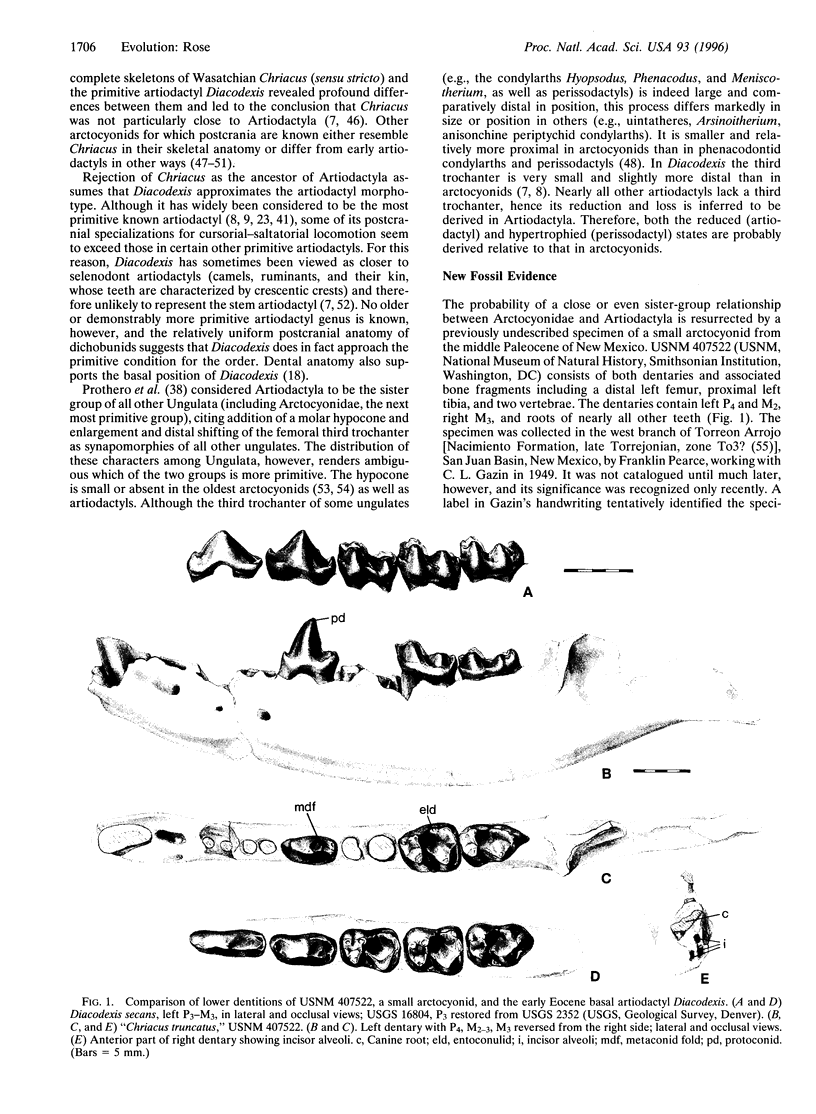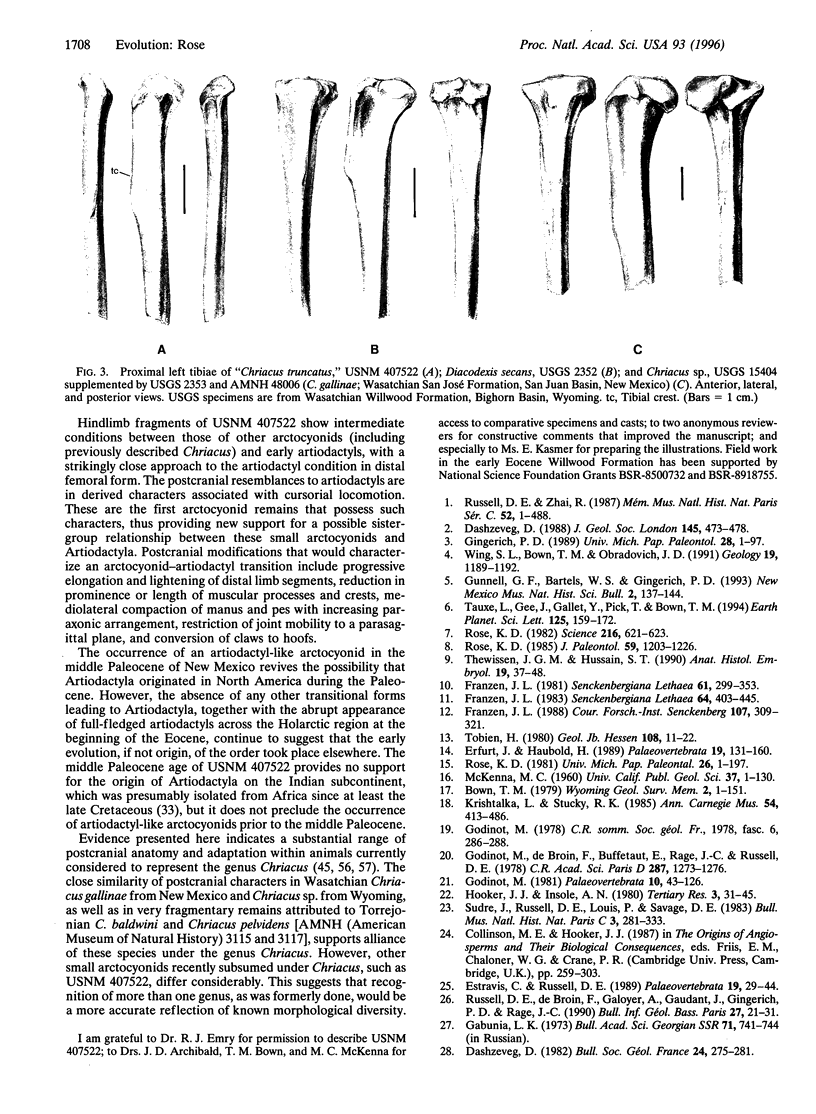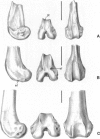Abstract
The first known members of the order Artiodactyla appeared suddenly throughout the Holarctic region at the beginning of the Eocene. They are characterized by distinctive cursorial skeletal specializations. Owing to their abrupt appearance and the lack of transitional forms, the origin of the order is problematic. Descent from a "condylarth," specifically the arctocyonid Chriacus, has been suggested based on dental resemblances, but until now postcranial anatomy seemed to preclude close relationship between Arctocyonidae and Artiodactyla. A middle Paleocene specimen of a small arctocyonid (?Chriacus) reported here is much more similar to the oldest artiodactyl, Diacodexis, in the derived condition of the hindlimb, reviving the possibility that Artiodactyla evolved from an arctocyonid.
Full text
PDF




Images in this article
Selected References
These references are in PubMed. This may not be the complete list of references from this article.
- Rose K. D. Climbing adaptations in the early eocene mammal Chriacus and the origin of artiodactyla. Science. 1987 Apr 17;236(4799):314–316. doi: 10.1126/science.3426662. [DOI] [PubMed] [Google Scholar]
- Rose K. D. Skeleton of diacodexis, oldest known artiodactyl. Science. 1982 May 7;216(4546):621–623. doi: 10.1126/science.216.4546.621. [DOI] [PubMed] [Google Scholar]
- Rose K. D., Walkler A., Jacobs L. L. Function of the mandibular tooth comb in living and extinct mammals. Nature. 1981 Feb 12;289(5798):583–585. doi: 10.1038/289583a0. [DOI] [PubMed] [Google Scholar]
- Thewissen J. G., Hussain S. T. Postcranial osteology of the most primitive artiodactyl Diacodexis pakistanensis (Dichobunidae). Anat Histol Embryol. 1990 Mar;19(1):37–48. doi: 10.1111/j.1439-0264.1990.tb00876.x. [DOI] [PubMed] [Google Scholar]





